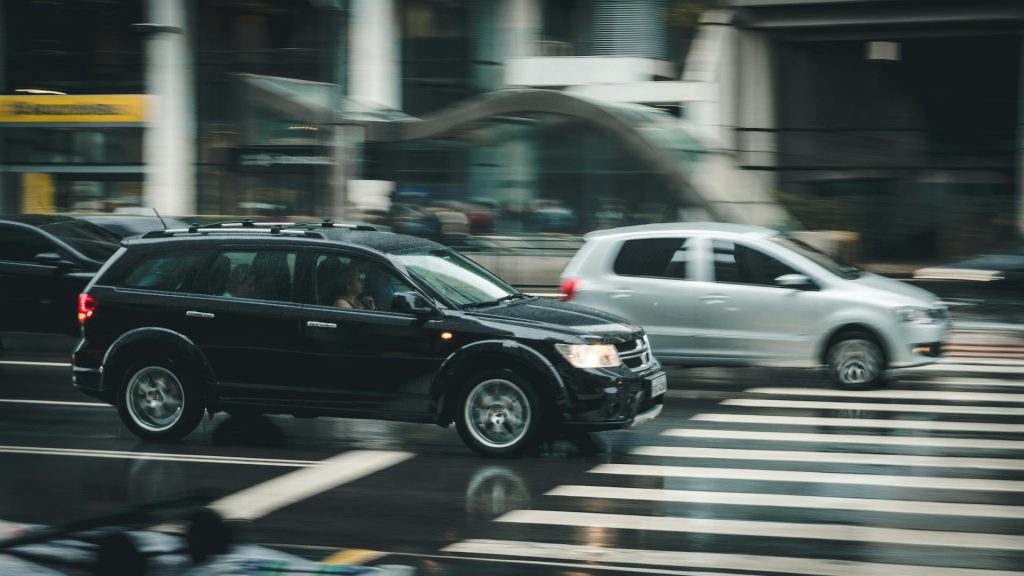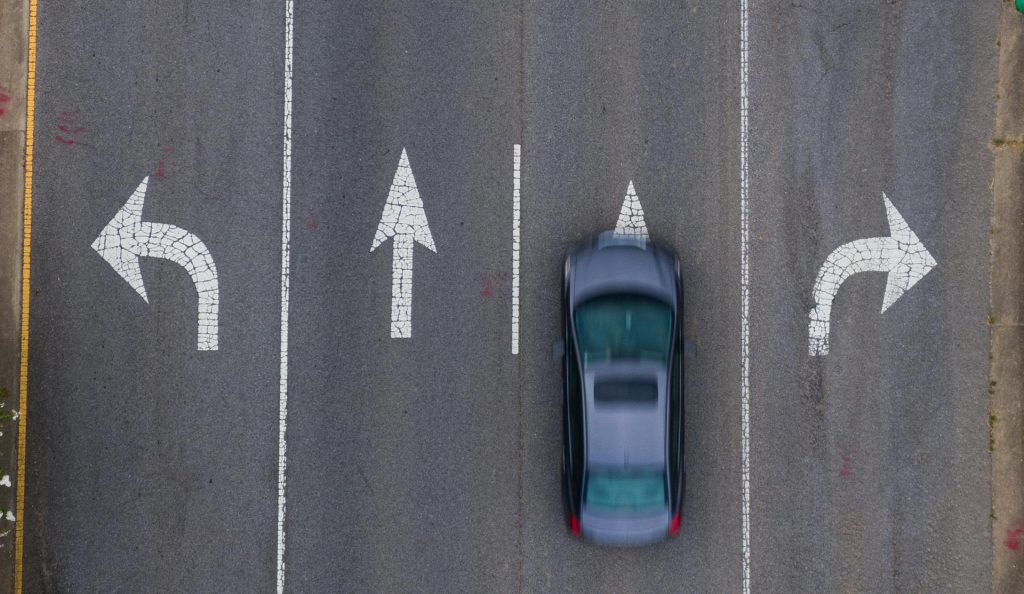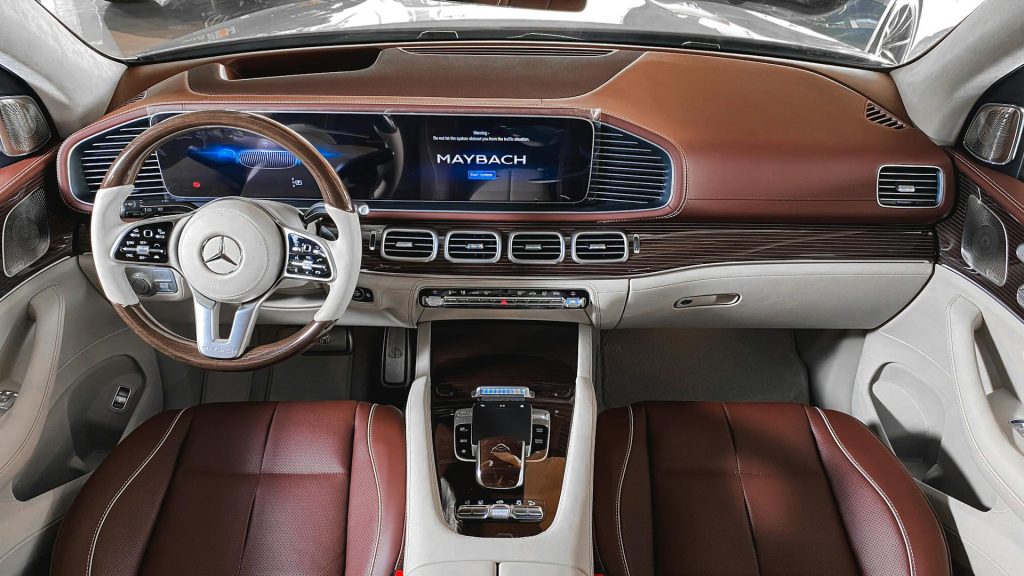In the ever-evolving world of car technology, safety advancements are constantly pushing the boundaries of what’s possible. Whether you’re a seasoned driver or just starting out, these innovations can give you peace of mind and make your time on the road safer for everyone. This article dives into the 5 most common new car safety features, exploring how they work, their benefits, and any limitations. We’ll also discuss how these features can potentially impact your auto insurance pricing. Finally, we’ll take a peek into the future and explore 5 emerging safety features that might be gracing our roads very soon. Follow along with Cheapinsurance.com to learn how these technological marvels are changing the driving experience for the better!
Key Takeaways:
- Advanced safety features like AEB and LKA can help prevent accidents and improve road safety.
- These features may lead to lower auto insurance premiums or qualify you for discounts.
- The future holds exciting advancements like V2X communication and enhanced driver monitoring systems.
- Expect continuous innovation with features personalized to your driving style and even fully autonomous vehicles on the horizon.
- Remember, driver awareness and caution remain essential, even with advanced safety technology.

1. Automatic Emergency Braking (AEB): Your Guardian Against Collisions
Imagine a scenario: you’re cruising down the highway, lost in thought for a moment, when the car in front of you slams on their brakes. Automatic Emergency Braking (AEB) is your guardian angel in such situations. This innovative safety feature can automatically apply the brakes to help avoid a collision or lessen its impact if you don’t react in time.
How it Works: AEB acts like a vigilant copilot, constantly monitoring the road ahead using sensors like radar, cameras, or LiDAR. When it detects a potential forward collision with a slower or stationary vehicle, the system issues a warning (audible or visual) to alert the driver. If the driver doesn’t react, AEB automatically applies partial or full braking force to slow the car down or bring it to a complete stop.
Benefits and Limitations: AEB is a lifesaver, especially in situations where driver distraction or delayed reaction time could lead to an accident. Studies show a significant reduction in rear-end collisions with AEB in use. However, it’s important to remember that AEB has limitations. It may not be effective at high speeds, during sharp turns, or when encountering obstacles other than vehicles (like pedestrians or animals). AEB is also an assistive technology; it doesn’t replace the need for driver awareness and caution.
Examples: AEB is becoming increasingly common and can be found on a wide range of car models from various manufacturers. For instance, many popular sedans, SUVs, and even some budget-friendly cars now offer AEB as a standard or optional feature.

2. Lane Departure Warning (LDW) and Lane Keeping Assist (LKA): Keeping You in Your Lane
Ever drifted out of your lane unintentionally during a long drive or a moment of fatigue? Lane Departure Warning (LDW) and Lane Keeping Assist (LKA) work together to combat this issue, keeping you centered in your lane and promoting safer driving.
How it Works: Both LDW and LKA rely on a camera mounted on the windshield, typically behind the rearview mirror. This camera detects lane markings on the road.
- LDW: When you unintentionally veer out of your lane without activating your turn signal, LDW sounds an audible alert or vibrates the steering wheel to warn you. This gentle nudge serves as a reminder to correct your course.
- LKA: If LDW goes unheeded and your car continues to drift, LKA takes it a step further. It applies gentle steering torque to guide the car back into its lane. However, the driver can easily override the system with their own steering input.
Benefits and Limitations: LDW and LKA are valuable tools for preventing lane departure accidents, especially on long journeys or monotonous highways. They can help combat driver fatigue and inattentiveness. However, limitations exist. The system might not function properly on poorly marked roads, during heavy rain or snow, or on sharp curves. Additionally, over-reliance on LKA can lead to complacency behind the wheel. Remember, you’re still responsible for staying alert and in control of the vehicle.
Examples: LDW and LKA are becoming widespread features on many car models. From high-end luxury cars to affordable sedans and SUVs, you’ll find these driver assistance features offered by a growing number of manufacturers.
3. Blind Spot Monitoring (BSM): Eliminating Hidden Dangers
Our car’s blind spots – those areas hidden from view by the side mirrors and rear window – can pose a serious threat when changing lanes. Blind Spot Monitoring (BSM) acts as a second pair of eyes, helping you detect vehicles lurking in your blind spots and preventing potential collisions.
How it Works: BSM utilizes sensors, typically radar or ultrasonic, embedded in the rear bumper or side mirrors. These sensors continuously scan the zones alongside your car. When a vehicle enters your blind spot, BSM triggers a visual alert. This can be an illuminated icon in the side mirror, a dashboard light, or even a discreet symbol projected onto the windshield. Some systems might also emit an audible beep or vibrate the steering wheel to grab your attention.
Benefits and Limitations: BSM is a valuable tool for enhancing lane change safety, especially for drivers of larger vehicles with extensive blind spots. It can significantly reduce the risk of accidents caused by merging into another vehicle unintentionally. However, BSM has limitations. It might not detect motorcycles or bicycles due to their smaller size, and it may have reduced effectiveness in poor weather conditions. Additionally, BSM only warns of a vehicle’s presence, not its speed or trajectory. It’s crucial to always shoulder check before changing lanes, even with BSM active.
Examples: BSM is becoming a popular feature across various car segments. Many manufacturers, including Honda, Toyota, and Hyundai, offer BSM as a standard or optional feature on a wide range of sedans, SUVs, and even some budget-friendly models.
4. Rear Cross-Traffic Alert (RCTA): A Safer Reversing Experience
Backing out of a driveway or parking spot can be nerve-wracking, especially with limited visibility. Rear Cross-Traffic Alert (RCTA) comes to the rescue, acting as an extra set of eyes that warn you of approaching vehicles from behind your car.
How it Works: RCTA utilizes radar or ultrasonic sensors typically mounted in the rear bumper. These sensors continuously scan a zone perpendicular to your car’s path as you reverse. When a vehicle enters the detected zone, RCTA triggers a visual and often audible alert. This can be an illuminated icon in the side mirror, a flashing light on the dashboard, or even a beeping sound. Some advanced systems might even highlight the detected vehicle on the rearview camera display.
Benefits and Limitations: RCTA is a valuable safety feature, particularly in parking lots with high traffic flow. It can help prevent accidents caused by backing into oncoming vehicles, especially in situations where your view is obstructed. However, limitations exist. RCTA might not detect slow-moving objects or pedestrians, and its effectiveness can be reduced in poor weather conditions. Additionally, RCTA only warns of approaching vehicles, not their speed or distance. It’s crucial to always proceed slowly and cautiously when reversing, even with RCTA active.
Examples: RCTA is becoming increasingly common on many car models. Manufacturers like Ford, Nissan, and Kia offer RCTA as a standard or optional feature on a wide range of sedans, SUVs, and even some minivans.
5. Adaptive Cruise Control (ACC): Maintaining a Safe Distance
Ever get frustrated with constantly adjusting your cruise control on long drives to maintain a safe distance from the car in front of you? Adaptive Cruise Control (ACC) takes the hassle out of highway cruising by automatically managing your speed to follow the vehicle ahead.
How it Works: ACC utilizes sensors like radar, LiDAR, or cameras to monitor the distance to the car in front.
- Maintaining Speed: When no vehicle is ahead, ACC functions like traditional cruise control, allowing you to set a desired speed.
- Adapting to Traffic: If a slower vehicle enters your path, ACC detects it and gradually reduces your car’s speed to maintain a preset following distance.
- Resuming Speed: Once the car ahead speeds up or moves out of the lane, ACC automatically accelerates your car back to your desired cruising speed.
Benefits and Limitations: ACC is a comfort and safety feature. It reduces driver fatigue on long journeys by automating speed adjustments and promoting smoother traffic flow. Additionally, it can help prevent collisions caused by following too closely. However, limitations exist. ACC might not function well in stop-and-go traffic, on curvy roads, or in adverse weather conditions. It’s also important to remember that ACC is an assistance system, not a self-driving feature. Drivers must remain alert and attentive at all times, prepared to take control when necessary.
Examples: ACC is becoming a widely available feature on many car models. From luxury cars to family sedans and SUVs, you’ll find ACC offered by a growing number of manufacturers, including Toyota, Honda, and General Motors.

The Impact of Safety Features on Auto Insurance
Equipping your car with advanced safety features can positively impact your car insurance rates. Here’s how:
Reduced Collision Risk: Features like Automatic Emergency Braking (AEB) and Lane Departure Warning (LDW) can help prevent accidents, leading to fewer claims and potentially lower auto insurance premiums for you. By demonstrating a commitment to safety, you may be seen as a lower risk driver by insurance companies.
Safer Driver Profile: Insurance companies often reward vehicles with safety features because they can indicate a more safety-conscious driver. This can translate into lower insurance rates for you.
Discount Programs: Many auto insurance companies offer discounts specifically for vehicles with certain safety features. These discounts can vary depending on the insurer, the specific features, and the value of your car. Be sure to inquire about available discounts when shopping for car insurance and mention all the safety features your car possesses.
It’s important to note that the impact of safety features on vehicle insurance rates can vary depending on several factors:
- Your Insurance Company: Different auto insurance companies place varying weights on safety features when calculating premiums.
- Your Driving History: A clean driving record with no accidents or violations will hold more weight than safety features when it comes to your insurance rates.
- Location: Rates can vary depending on your geographic location and accident rates in your area.
Overall, while the impact may not be immediate or significant, safety features are increasingly becoming a factor considered by car insurance companies. Even a small discount can add up over time, making your car safer and potentially saving you money on insurance.
A Glimpse into the Future: 5 Emerging Car Safety Features
The world of car safety is constantly evolving, with new features on the horizon that promise to revolutionize how we drive. Here’s a peek at 5 emerging safety features that could be gracing our roads in the near future:
1 Vehicle-to-Everything (V2X) Communication:
- The Technology Behind It: V2X technology allows cars to communicate with each other, as well as with traffic infrastructure like stoplights and road signs. This communication happens through short-range wireless signals.
- Potential Impact: V2X could significantly improve road safety by enabling cars to “talk” to each other, warning of potential collisions, hazards, and even upcoming red lights. This car innovation could drastically reduce accidents caused by human error and improve traffic flow.
- Estimated Availability: V2X technology is still under development, but some car manufacturers like Ford and General Motors are already conducting trials. We might see limited implementations within the next few years, with wider adoption potentially happening in the next decade.
2 Enhanced Driver Monitoring Systems:
- The Technology Behind It: Advanced cameras and sensors inside the car will monitor not just the road ahead, but also the driver’s alertness, focus, and even potential signs of drowsiness or distraction.
- Potential Impact: This technology could prevent accidents caused by driver fatigue, inattention, or even medical emergencies. By detecting drowsiness or impairment, the system could issue warnings or even take corrective actions like slowing down the car or pulling over safely.
- Estimated Availability: Driver monitoring systems are already present in some cars, but enhanced versions with more sophisticated features are likely to emerge within the next few years. Companies like Tesla and Nissan are at the forefront of this development.
3 Advanced Emergency Response Systems:
- The Technology Behind It: These systems could integrate seamlessly with emergency services. Using GPS and onboard sensors, the car could automatically contact emergency responders in case of a collision, providing critical data about the accident and the occupants’ well-being.
- Potential Impact: This technology could significantly improve response times in case of accidents, potentially saving lives. Additionally, it could provide valuable data to emergency personnel about the severity of the situation.
- Estimated Availability: Basic emergency response systems are already available in some cars. However, more advanced features with automated communication capabilities might take a bit longer, potentially becoming mainstream within the next decade. Companies like Volvo and BMW are actively researching these systems.
4 Biometric Authentication and Personalized Safety Settings:
- The Technology Behind It: Fingerprint scanners or facial recognition could be used to identify the driver and adjust safety features based on their preferences and driving style.
- Potential Impact: This personalization could optimize safety features for each driver. For example, the system could adjust seatbelt tightness, steering sensitivity, or even pre-set a safe following distance based on the driver’s profile.
- Estimated Availability: While fingerprint scanners are already used for keyless entry in some cars, widespread adoption of biometric authentication for safety features is likely further down the road, potentially in the next decade or beyond.
5 Fully Autonomous Vehicles:
- The Technology Behind It: This represents the ultimate goal: self-driving cars that eliminate human error from the equation altogether. Advanced sensors, LiDAR, and powerful AI systems would be required to navigate roads safely and make real-time decisions.
- Potential Impact: Fully autonomous vehicles have the potential to revolutionize transportation, drastically reducing traffic accidents and fatalities. However, significant technological advancements and regulatory frameworks are needed before widespread adoption becomes a reality.
- Estimated Availability: Fully autonomous vehicles are still in the testing phase. While some self driving car companies like Waymo are conducting trials, widespread availability is likely a decade or more away.
These are just a few examples of the exciting innovations on the horizon for car safety. As technology continues to evolve, we can expect even more features that will make driving safer and more enjoyable for everyone.


